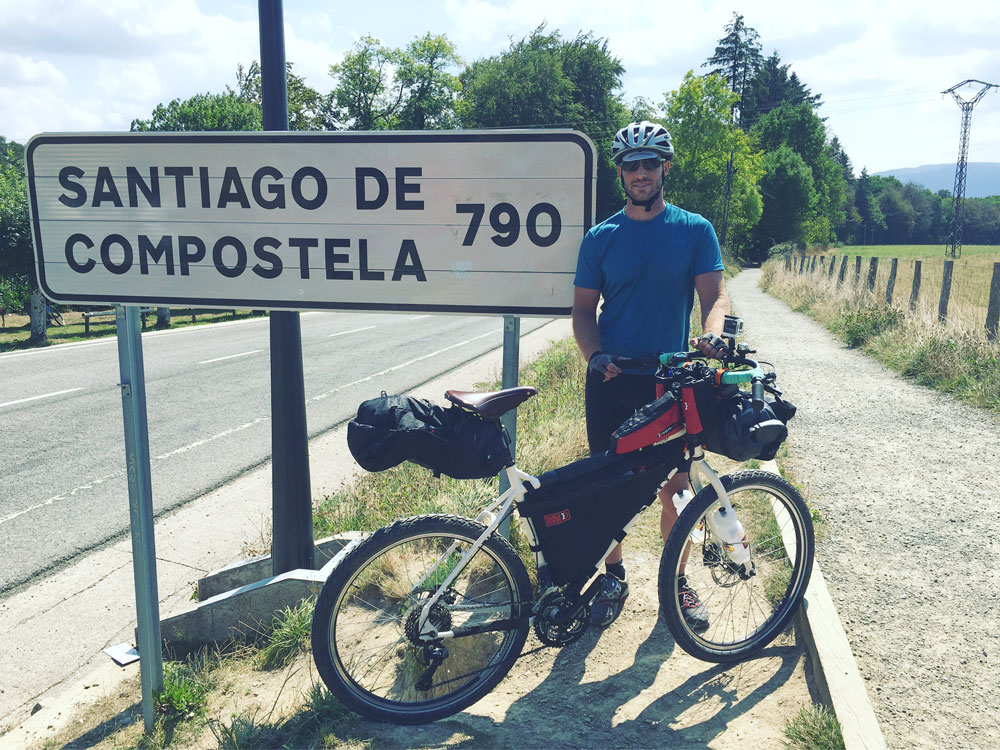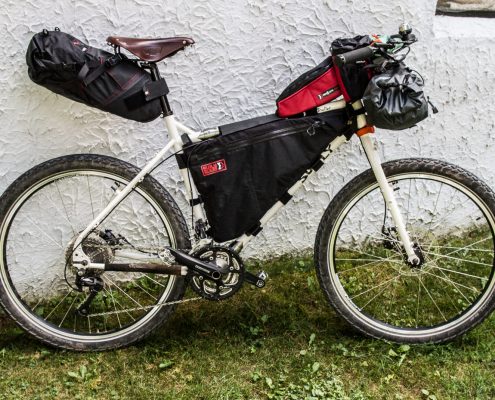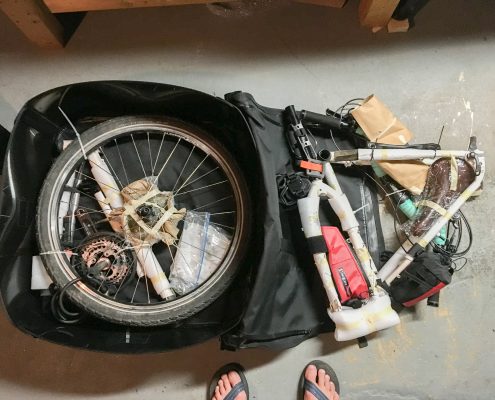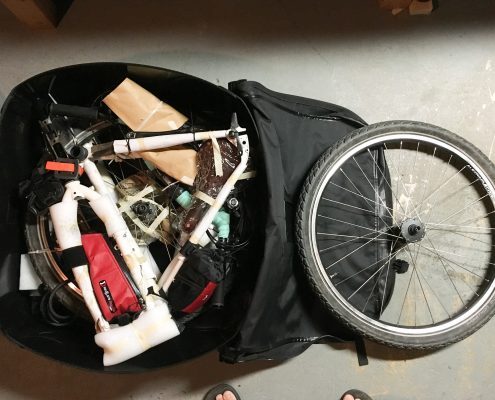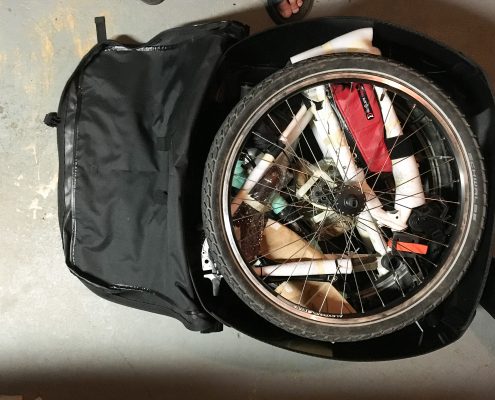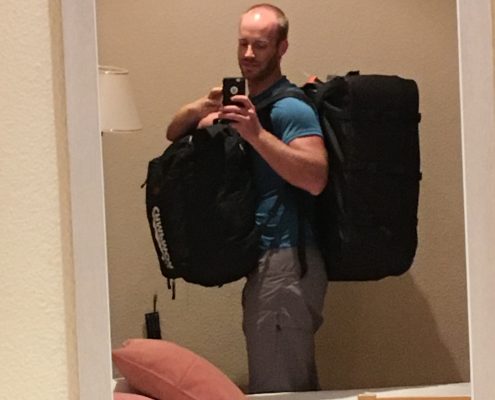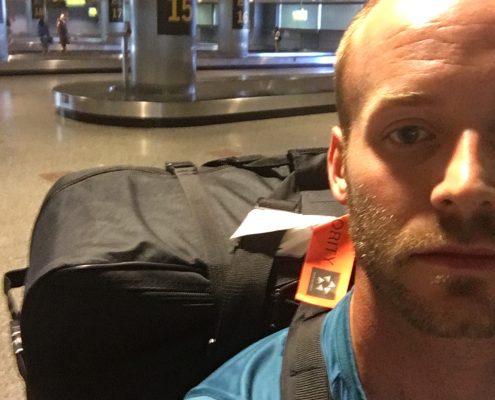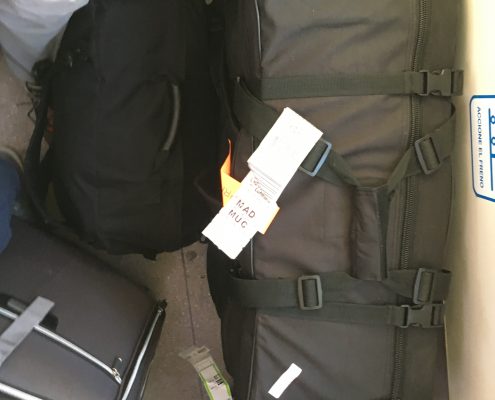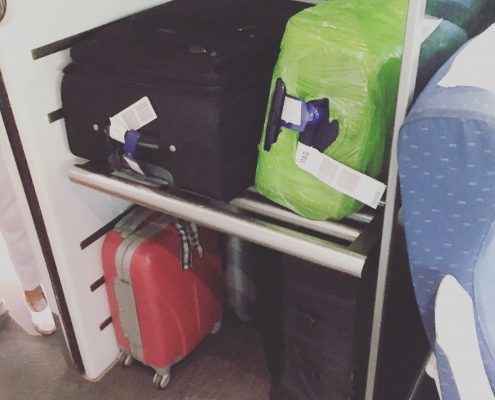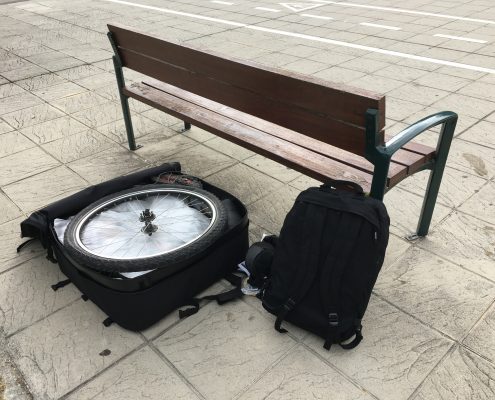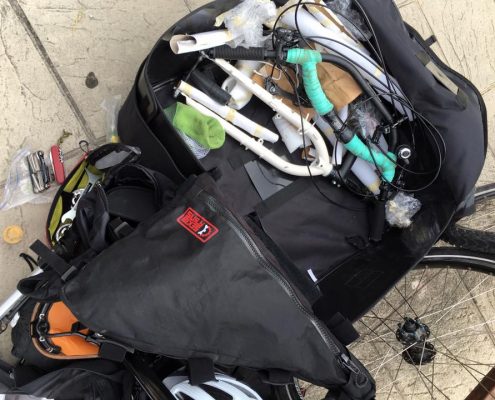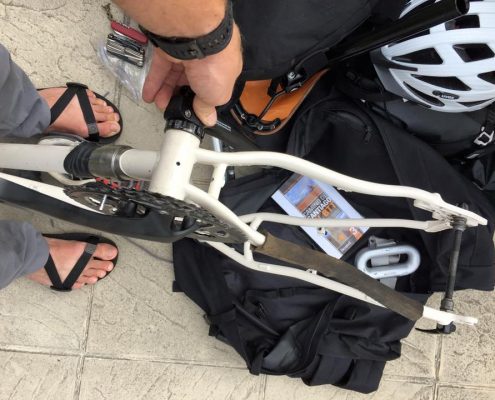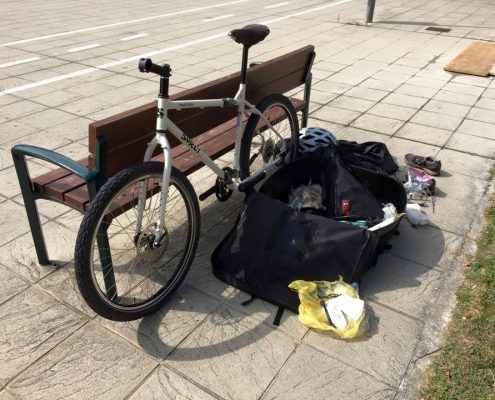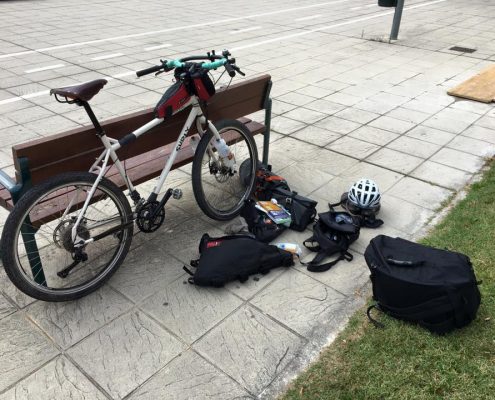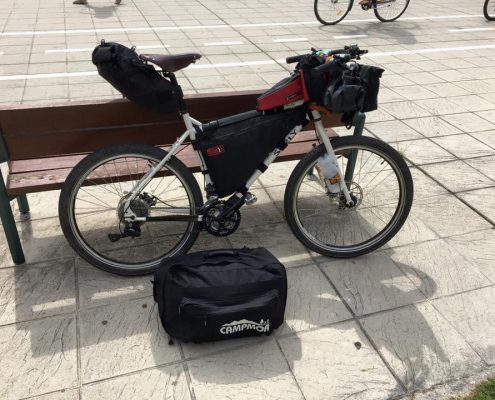Getting to the Camino with your bike
Getting to your starting point on the Camino de Santiago will likely include a flight into a major airport (Madrid, Barcelona, and Paris are the most likely) followed by some combination of local flight, bus or train.
As this process can be more complicated if bringing your own bike along, see the list of options first for getting a bike to the Camino, while the information in the below will aid in your general travel planning.
*All cost estimates assume riding the full Camino Frances over 2-3 weeks
How do I get a bike to the Camino?
This is by far the simplest way to go logistically, and possibly the most cost effective. Various bike rental companies in Spain specialize in Camino rentals, and will send the bike to your starting point and have a drop off location in Santiago de Compostela. Racks, panniers and other cycling accessories are also available for rent along with the bike, or you are free to bring your own. Save the logistics headache and wear and tear on your own bike. See our list of bicycle rental companies.
Cost: €250-400 ($275-550) – depending on bike model & extra equipment
2. Transport your own bike to Spain
While more logistically complex, you’ll be on the bike you know and trust. Downsides and variables include airline, train and bus bicycle fees, lugging your bike box between transit connections, and the process of partially disassembling, boxing and packing your bicycle as luggage (twice). Don’t be too intimidated though, this has been the most common method for bicycle touring throughout the years. Regulations are always changing, so be sure to check airline policy at the time of booking your flight.
A. Flying with your bike
Flying from your home country to Spain or France requires packing your bike as luggage and checking it on your flight. Airlines vary greatly with regulations and fees, but the general principles for standard bicycle types include:
- Bike must be partially disassembled in a box (cardboard is cheaper, best for flying in and out of separate airports) or bike-specific luggage/suitcase (best for loop trips but you have to purchase the bag)
- Bike will be checked as baggage, often counting for your checked bag within the normal weight limits.
- Bike shops usually offer used cardboard boxes for free, or box the bike for you at a standard boxing fee ($35-50). If having a shop box your bike, make sure you are comfortable to reassemble everything when you arrive.
- This process usually involves taking off the front wheel, pedals, deflating the tires (unpressurized cargo areas cause issues to at full tire pressure), lowering/removing the seat post, and it’s a good idea to unscrew your rear derailleur from the frame as it can get bent. Assume the box may gain a hole or two from handling, so zip tie loose parts to the frame or secure them in panniers, stuff sacks, etc.. Add padding and tape to immobilize and secure contents
- You can still pack luggage and gear within the same box, granted that it is under the weight limit (usually 50 lbs. / 23 kg). As a cardboard box weighs very little, you should still have 15-20 lbs. (6-9 kg) remaining.
- Make sure transportation to/from the airport has space to fit the bike box.
- Visit this page for detailed instructions with images on the process of ‘boxing a bike.’
- The airline will charge you a fee for checking a bicycle in each direction (having a transfer on the same ticket will not incur an extra fee). This fee ranges from $50-200 per direction, depending on the airline.
- Consider risks to bicycle damage during the flight. Inspect bicycle immediately after landing as you often have a short time period to make a claim. Check what the airline provides in case of damage, and consider purchasing extra insurance.
- Repeat the boxing process for the return journey (probably in Santiago). See a list of bike shops in Santiago.
Check with each specific airline’s regulations before booking any tickets, and give them a call with any questions you have.
Cost: $220-530 for a round trip flight, local train and bus fees
- Airline fees: $50-200 per direction – depends on airline
- Boxing fee: $0- 50 per direction – depends if you do it yourself or hire a bike shop
- Train bicycle fee (Madrid to Pamplona or Paris to Bayonne): [Renfe in Spain]
- Bus bicycle fee (Madrid to Pamplona, Pamplona to St. Jean)
Special bikes that can avoid airline (also train and bus) fees:
- Folding bicycles: These small-framed bicycles have hinges that fold the bike in half, have smaller wheels and extendable handbags and seat posts. Bike Friday is a popular brand (full bikes start around $900). Folding bikes are not often seen on the Camino.
- Bicycles with S&S Couplers: If you envision many flights with your bike, this is really the way to go. These bicycles have frame couplers that allow dismantling the frame into two halves and packing the bicycle in a bag that is 26 x 26 x 10 inches (66 x 66 x 25 cm), which is the maximum size of a normal checked bag that incurs no additional fees. S&S Couplers are sold on select bicycle frames and usually add $500-600 to the normal frame cost, but can also be retrofitted to any bike frame ($500-750). The Surly World Troller (frameset/fork runs around $1175) is one of the most versatile options for building global touring bike that can take you anywhere. The airline bicycle bag with the specific dimensions costs an additional $250-400, or you can risk making your own cardboard box to this size. Total investment is starts at around $750, which would be paid off after three round trip flights on most airlines.
- Some airlines will still charge a bicycle fee if they know you have a bike inside your bag, so good to check details before closing your airline and booking your flight to avoid this.
My World Troller with S&S Couplers from home to Camino
I flew to Madrid, took the train to Pamplona, and then reassembled the bike there. I mailed the soft case and carry on bag from the post office in Pamplona to Santiago for around 20 euros, where they keep it for free for about two weeks, and then 1 euro/additional day.
While is is possible to ship your boxed bicycle overseas via a service such as BikeFlights.com, most people will find this option cost prohibitive (more than $1000 for a round trip- that’s the bike, not your flight).
B. Trains & bikes
Taking your bike on trains in Spain, France and throughout Europe varies by country and specific type of train/service. Often you need to reserve a bicycle space, and a small fee is charged (€2-10).
In Spain, RENFE long distance trains (ALVIA, AVE, ALTERIA, AV CITY, TALGO) require your bike to be boxed to the maximum size of 120x90x40cm (47x35x15”), which is on the smaller end of a normal bike box. Medium distance and commuter trains require less (bring aboard on without disassembly, limit of number of bikes/train). Read RENFE’s regulations.
If flying to the Camino from outside of Europe and taking a train to the airport, you’ll likely have your bike already in a box, but it’s still good to check on any bicycle restrictions for those routes. In the USA, Amtrak is in the process of converting all routes to allow bicycles.
C. Buses & bikes
Buses are often the most bicycle-friendly and affordable:
- In Spain, start with Alsa: €5-10 per trip, bicycle should be wrapped for protection (covers sold for €12 at ticket desk), arrive 15 minutes before departure. More information on Alsa’s Luggage Information page
3. Buy (& hopefully sell) a bike in Spain/France
Buy a bike in St. Jean, Pamplona or somewhere else near the beginning of your Camino, and then hope to resell it before you leave Spain (usually in Santiago de Compostela, possibly to an incoming pilgrim if arranged ahead of time). This is probably the least common option cyclists take, but does offer the advantage of possibly recovering your cost and seeing/fitting the bike you take before committing to it. The downside is that you won’t be able to find a buyer before you leave and get stuck with the full purchase price, as well as the hassle of buying/selling in a foreign country. Check out Craigslist?, Facebook groups? or contact local bike shops along the route. Decathlon offers a variety of bike options from less than €200 (remember you get what you pay for…).
Cost range: €0-€1000
Transportation to the Camino
Visas and Entry
Spain and France are both among the 26 Schengen states of the European Union (EU), between which there are no internal borders. Citizens of the USA, Canada, Australia, New Zealand and some South American countries are issued a free visa upon arrival with valid passport. This visa is limited to 90 days within a 180- day period, which is cumulative over multiple trips. Most African, Asian, Middle Eastern and some South American nationalities must apply for an advance visa. Visit the EU website and check with your embassy or consulate for visa-related questions.
Flight websites
Book your flights early for best prices and maximum availability. Look carefully at each airlines baggage policy to see how you will need to check your bike or luggage and what these costs checking will add to the overall fare.
- www.skyscanner.com (aggregator of discount airlines)
- www.vueling.com
- www.spanair.com
- www.iberia.com (50% deduction for one-way tickets from Santiago)
- www.ryanair.com (3 daily flights between Santiago and Madrid)
- www.easyjet.com (daily flights from Santiago to Paris)
Train websites
It’s important to book international trains well in advance for the best prices and availability. Many require reserving a bicycle space if applicable.
- www.renfe.es (Spanish train website, notoriously difficult to purchase tickets from abroad via website, note 25-40% discount for those 60 years or older)
- www.sncf.com (French train website, also difficult to purchase tickets from abroad)
- www.raileurope.com (easier to book through this service, though charge a €8 booking fee)
Bus websites
Buses can be booked closer to departure dates as the prices are fixed and do not change. Many require reserving a bicycle space if applicable.
Airports which fly to/from Santiago de Compostela (SCQ)
- Dublin (Aer Lingus), Geneva (EasyJet), Bilbao (Iberia), Madrid (Ryan Air, Iberia), Alicante, Barcelona, London-Stansted, Valencia (Ryan Air), Barcelona, Paris, Málaga, Zürich (Vueling)
Airports which fly to Biarritz
(Easyjet, Ryan Air, Volotea, Air France, see http://en.biarritz.aeroport.fr/)
- Marseille, Manchester, Strasbourg, Dublin,Geneva Stockholm, London, Lyon, Nice, Rotterdam, Paris, Brussels.
St Jean Pied de Port
- From Paris, take the train to Bayonne (5.5 hours/€30-100), then a local train to St Jean (1 hour).
- From Madrid, take a bus to Pamplona, another bus from Pamplona to Roncesvalles, and a taxi to St Jean.

